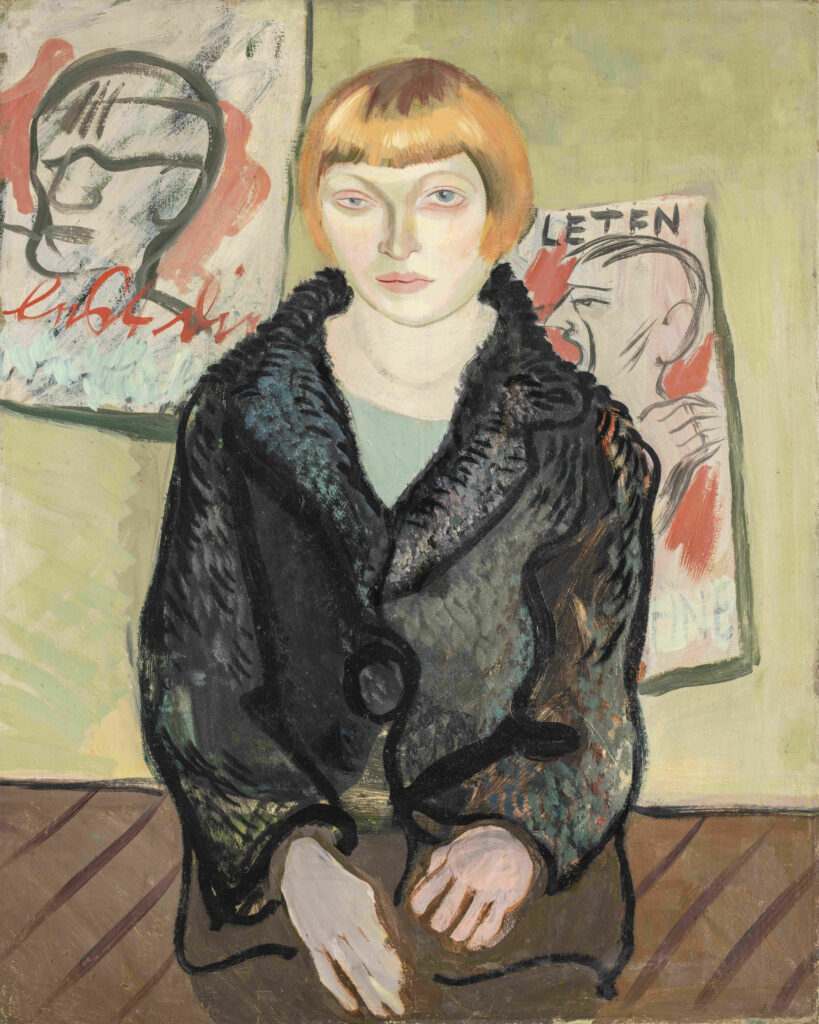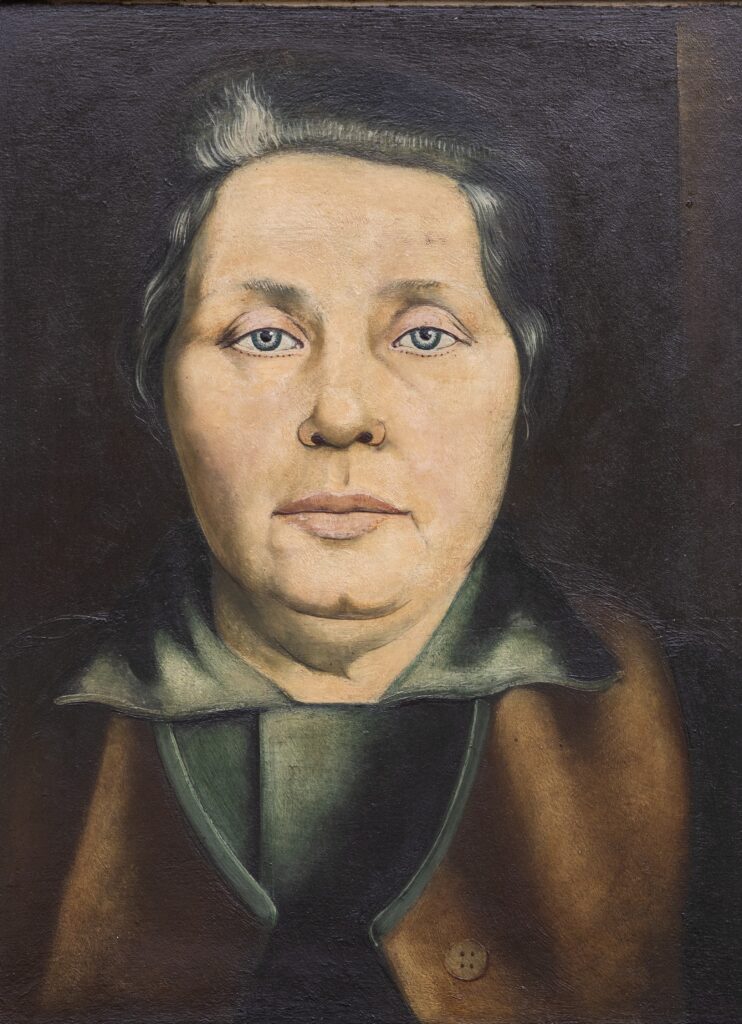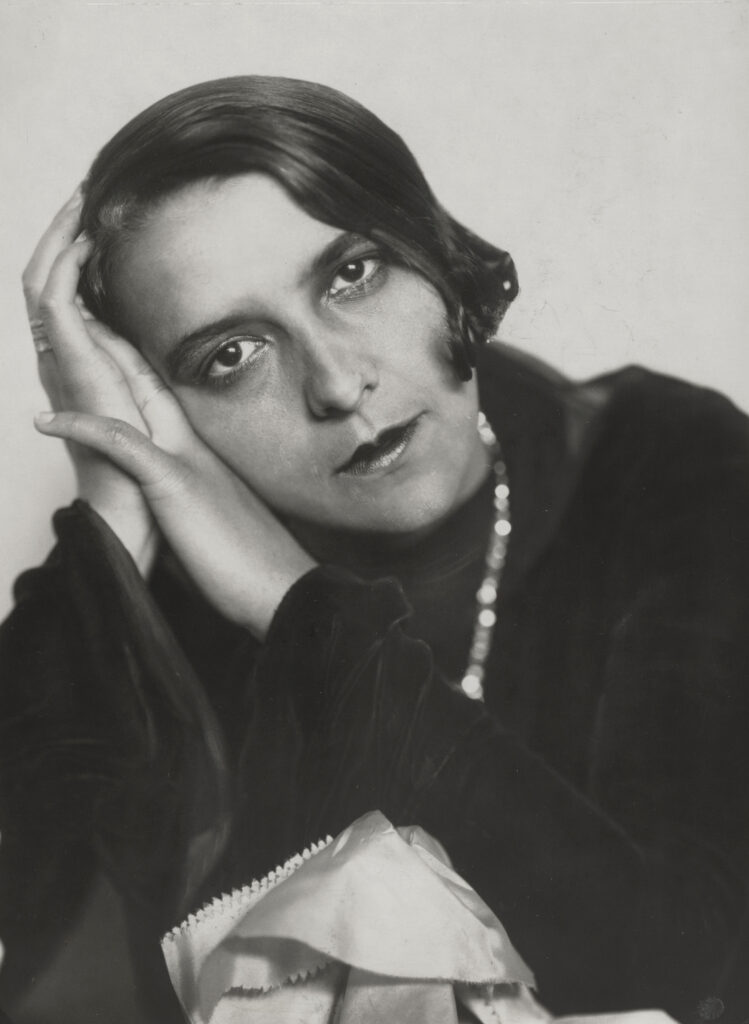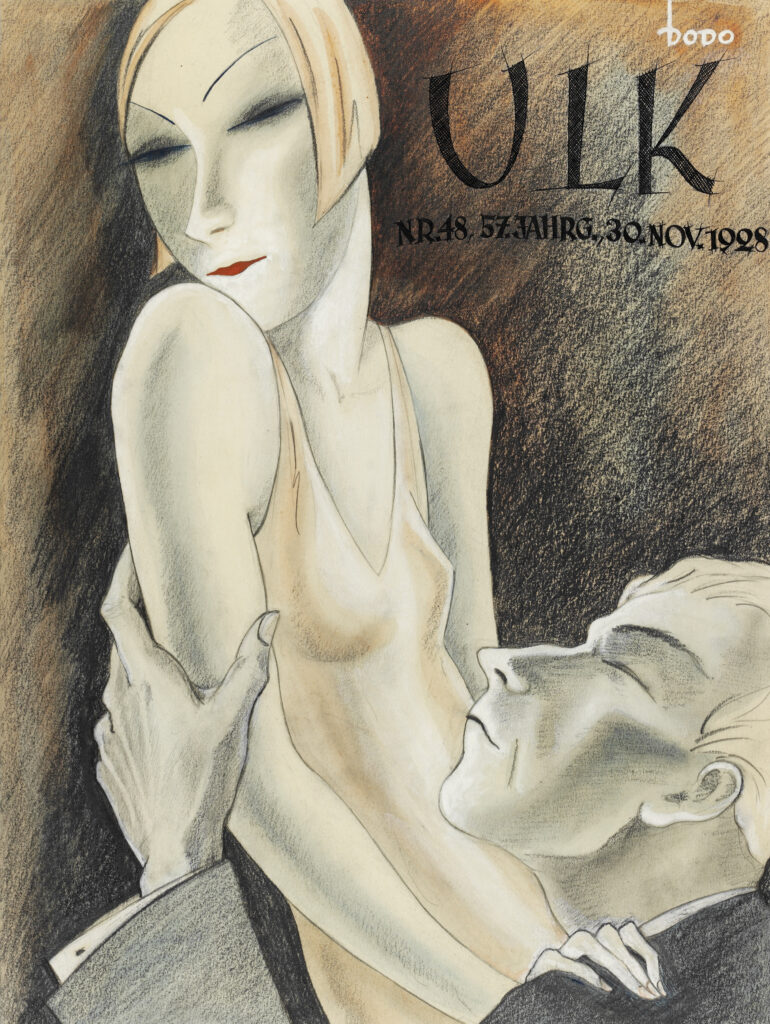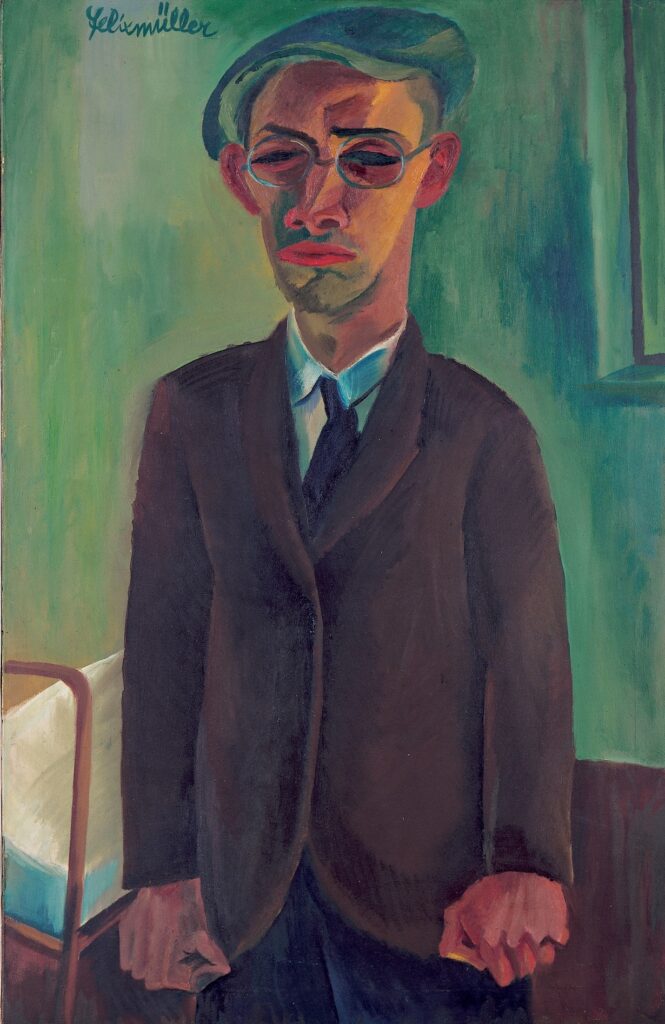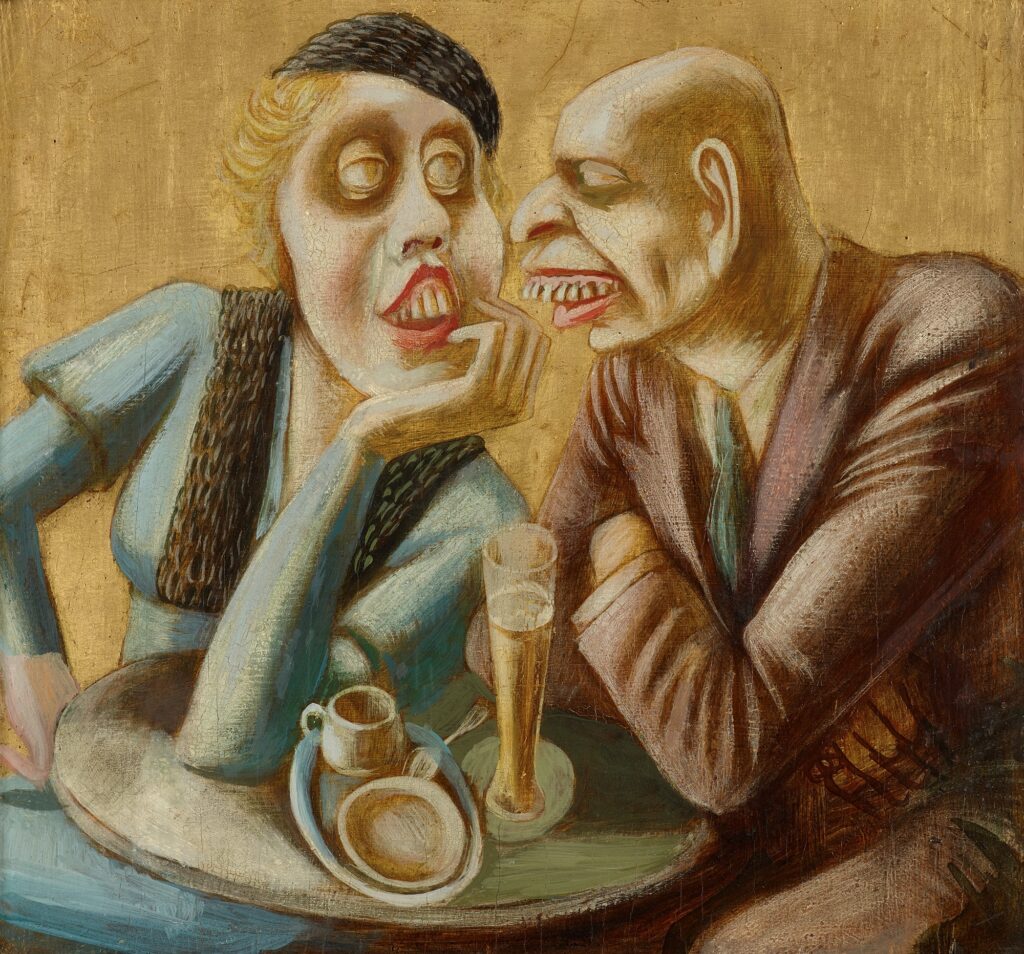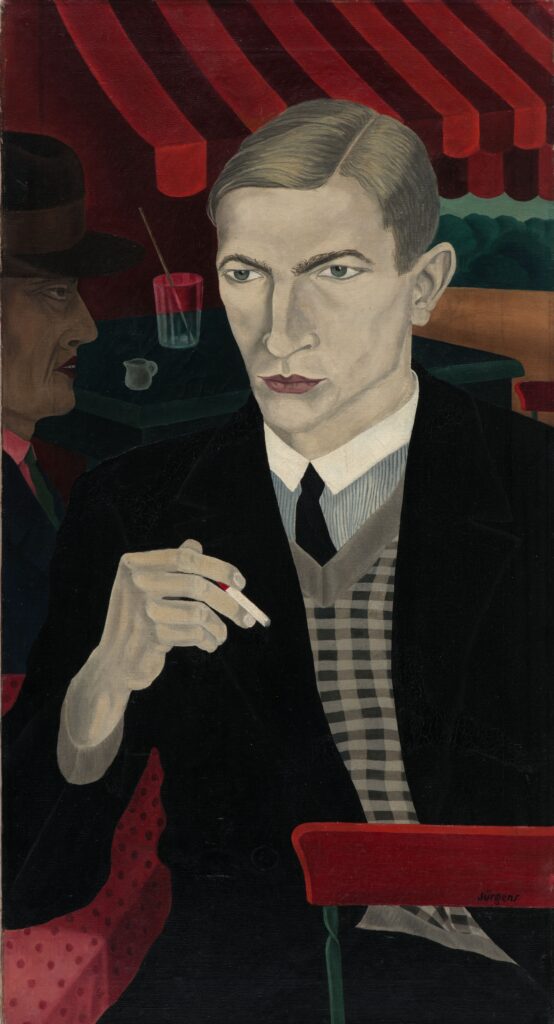Sieh dir die Menschen an!
The new-objective type portrait in the Weimar period
What does our face reveal about our character, our life, our political leanings? In the context of the current use of artificial intelligence, this is a question that might well give rise to a comeback for physiognomy using algorithms and statistics. This approach is not new. Concepts of types were widespread even in the Weimar era. Reflections on physiognomy, type theory and characterology abounded, both in scientific publications and in the flourishing newspaper, cinema and literature sectors.
For the first time, the exhibition will focus intently on the portraits of types of the New Objectivity era in their historical context. Numerous works in which artists like Otto Dix, George Grosz, Jeanne Mammen and Hanna Nagel foregrounded the “typical” in their portraits of people were influenced considerably by a discourse taking place in society as a whole during the Weimar Republic: the search for the “face of the time”. From today’s perspective, that way of thinking is seen as a mania for categorisation and typification in an epoch seeking orientation. A few years later, however, the categorisation and associated degradation of people became the foundation of National Socialist racial ideology.
The exhibition also illustrates that many of the stereotypes and clichés of that time still continue to have an effect today and influence our view of other people. Finally, by means of an installation which Cemile Sahin created especially for the occasion, the exhibition draws a line from then to now.
The exhibition title refers to the widely read book “Sieh dir die Menschen an!” by Gerhard Venzmer (1893-1986). The book was first published in 1930 by Franckh’sche Verlagsbuchhandlung Stuttgart and, according to the publisher’s description, was intended to “vividly explain the inner relationships between the shape of the body and the nature of man”. From today’s perspective, it can be seen that despite the enormous scope of the publication, the theses formulated here did not go beyond pseudo-scientific fabulation. They emerged in the spirit of an ideology of exclusion that led to expulsion and genocide.
Organised by Kunstmuseum Stuttgart together with Kunstsammlungen Chemnitz – Museum Gunzenhauser
![]()
Gallery
Dates Sieh dir die Menschen an!
-
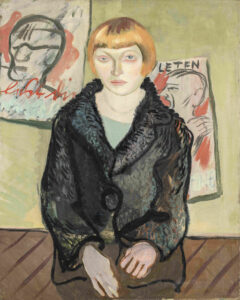 Familienführung 28. July 2024
Familienführung 28. July 2024
16:00 UhrSieh dir die Menschen an!
Museum GunzenhauserGemeinsam erkunden wir auf spielerische Art die Ausstellung. Im Anschluss erforschen wir kreativ das eigenen Ich.
Download Event -
 Public guided tour 3. August 2024
Public guided tour 3. August 2024
14:30 UhrSieh dir die Menschen an!
Museum GunzenhauserLernen Sie bei unseren öffentlichen Führungen die Ausstellung Sieh dir die Menschen an! kennen. Diese betrachtet das neusachliche Typenporträt der Weimarer Zeit (1918-1933) erstmals eingehend im historischen Kontext. Das Denken in menschlichen Typen sowie Themen wie Physiognomie und Charakterologie waren zur damaligen Zeit allgegenwärtig. Die Ausstellung schlägt den Bogen zur Gegenwart und verdeutlicht, dass viele Stereotype und Klischees von damals bis heute nachwirken und den Blick auf unser Gegenüber beeinflussen.
Download Event -
 Public guided tour 10. August 2024
Public guided tour 10. August 2024
14:30 UhrSieh dir die Menschen an!
Museum GunzenhauserLernen Sie bei unseren öffentlichen Führungen die Ausstellung Sieh dir die Menschen an! kennen. Diese betrachtet das neusachliche Typenporträt der Weimarer Zeit (1918-1933) erstmals eingehend im historischen Kontext. Das Denken in menschlichen Typen sowie Themen wie Physiognomie und Charakterologie waren zur damaligen Zeit allgegenwärtig. Die Ausstellung schlägt den Bogen zur Gegenwart und verdeutlicht, dass viele Stereotype und Klischees von damals bis heute nachwirken und den Blick auf unser Gegenüber beeinflussen.
Download Event -
 Public guided tour 11. August 2024
Public guided tour 11. August 2024
16:00 UhrÖffentliche Führung : mit ukrainischer Übersetzung
Museum GunzenhauserWir laden Sie herzlich zur Führung mit simultaner ukrainischer Übersetzung am Sonntag, den 11. August 2024, um 16:00 Uhr in das Museum Gunzenhauser ein. Die Führung findet in der Ausstellung »Sieh Dir die Menschen an! « statt.
Download Event -
 Public guided tour 17. August 2024
Public guided tour 17. August 2024
14:30 UhrSieh dir die Menschen an!
Museum GunzenhauserLernen Sie bei unseren öffentlichen Führungen die Ausstellung Sieh dir die Menschen an! kennen. Diese betrachtet das neusachliche Typenporträt der Weimarer Zeit (1918-1933) erstmals eingehend im historischen Kontext. Das Denken in menschlichen Typen sowie Themen wie Physiognomie und Charakterologie waren zur damaligen Zeit allgegenwärtig. Die Ausstellung schlägt den Bogen zur Gegenwart und verdeutlicht, dass viele Stereotype und Klischees von damals bis heute nachwirken und den Blick auf unser Gegenüber beeinflussen.
Download Event -
 Public guided tour 18. August 2024
Public guided tour 18. August 2024
16:00 UhrSieh dir die Menschen an!
Museum GunzenhauserLernen Sie bei unseren öffentlichen Führungen die Ausstellung Sieh dir die Menschen an! kennen. Diese betrachtet das neusachliche Typenporträt der Weimarer Zeit (1918-1933) erstmals eingehend im historischen Kontext. Das Denken in menschlichen Typen sowie Themen wie Physiognomie und Charakterologie waren zur damaligen Zeit allgegenwärtig. Die Ausstellung schlägt den Bogen zur Gegenwart und verdeutlicht, dass viele Stereotype und Klischees von damals bis heute nachwirken und den Blick auf unser Gegenüber beeinflussen.
Download Event -
 Vortrag 21. August 2024
Vortrag 21. August 2024
18:00 UhrBlick_Macht Gender ? Die neue Frau und ihr Pendant
Museum GunzenhauserBlick_Macht Gender ? Die neue Frau und ihr Pendant. Gemeinsam Bilder Spiegel Sehen. Hören. Sprechen Diskutieren & Genießen
Download Event Directions Directions -
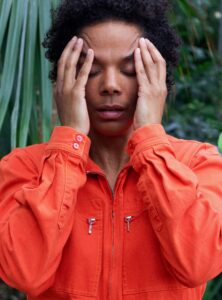 Workshop 24. August 2024
Workshop 24. August 2024
13:00 UhrTypisch ich? Definier dich selbst. Ein körperorientierter Empowerment-Workshop für BIPoC
Museum GunzenhauserTypical me? Define yourself. A body-orientated empowerment workshop for BlackIndigenousPeopleofColor (BIPoC)* with Pasquale Virginie Rotter
Download Event -
 Public guided tour 24. August 2024
Public guided tour 24. August 2024
14:30 UhrSieh dir die Menschen an!
Museum GunzenhauserLernen Sie bei unseren öffentlichen Führungen die Ausstellung Sieh dir die Menschen an! kennen. Diese betrachtet das neusachliche Typenporträt der Weimarer Zeit (1918-1933) erstmals eingehend im historischen Kontext. Das Denken in menschlichen Typen sowie Themen wie Physiognomie und Charakterologie waren zur damaligen Zeit allgegenwärtig. Die Ausstellung schlägt den Bogen zur Gegenwart und verdeutlicht, dass viele Stereotype und Klischees von damals bis heute nachwirken und den Blick auf unser Gegenüber beeinflussen.
Download Event -
 Public guided tour 25. August 2024
Public guided tour 25. August 2024
16:00 UhrPublic guided tour
Museum GunzenhauserWir laden Sie herzlich zur öffentlichen Führung in englischer Sprache am Samstag, den 25. August 2024, um 16:00 Uhr in das Museum Gunzenhauser ein. Die Führung findet in der Ausstellung Sieh Dir die Menschen an! statt.
Download Event -
 Im Gespräch und Reading 28. August 2024
Im Gespräch und Reading 28. August 2024
19:00 UhrHässlichkeit von Moshtari Hilal
Museum Gunzenhauser -
 Public guided tour 31. August 2024
Public guided tour 31. August 2024
14:30 UhrSieh dir die Menschen an!
Museum GunzenhauserLernen Sie bei unseren öffentlichen Führungen die Ausstellung Sieh dir die Menschen an! kennen. Diese betrachtet das neusachliche Typenporträt der Weimarer Zeit (1918-1933) erstmals eingehend im historischen Kontext. Das Denken in menschlichen Typen sowie Themen wie Physiognomie und Charakterologie waren zur damaligen Zeit allgegenwärtig. Die Ausstellung schlägt den Bogen zur Gegenwart und verdeutlicht, dass viele Stereotype und Klischees von damals bis heute nachwirken und den Blick auf unser Gegenüber beeinflussen.
Download Event -
 Familienführung 1. September 2024
Familienführung 1. September 2024
16:00 UhrSieh dir die Menschen an!
Museum GunzenhauserGemeinsam erkunden wir auf spielerische Art die Ausstellung Sieh dir die Menschen an!. Im Anschluss gestalten wir eigene kleine Kunstwerke zum Mitnehmen.
Download Event


